Have you ever seen such a beautiful painting that you wished you could crawl inside of it? To be inside the world that Van Gogh, Cézanne, or Monet created? If it's a real-life place in the painting, you can visit it yourself. Like Giverny, where Monet lived and painted the beauties of his garden.
Perhaps, for these famous painters, it was the opposite. When they saw something in real life, they wished to transfer it to the canvas so it could remain the way they saw it forever. Immortalized in time for future generations to see. Today, we can see the real-life locations that inspired famous paintings side-by-side, thanks to accounts like The Cultural Tutor, who take it upon themselves to educate social media users, one X thread at a time.
More info: X | The Cultural Tutor
#1
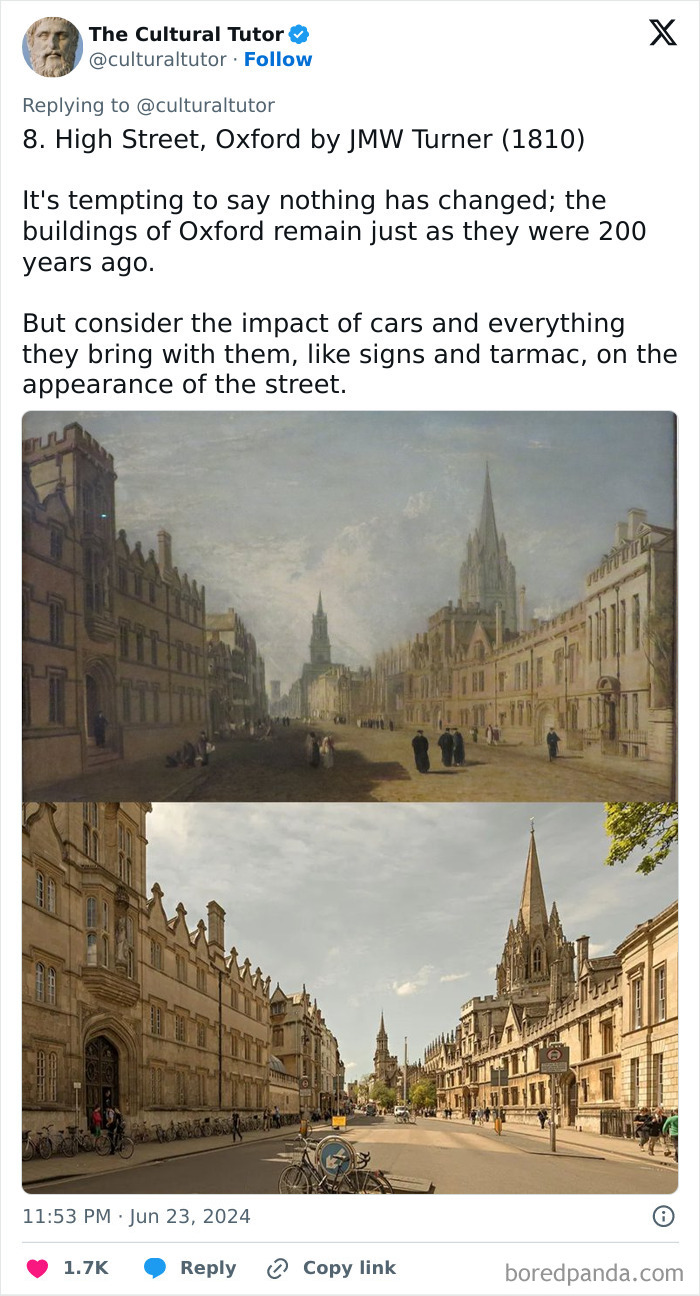
Image credits: culturaltutor
#2
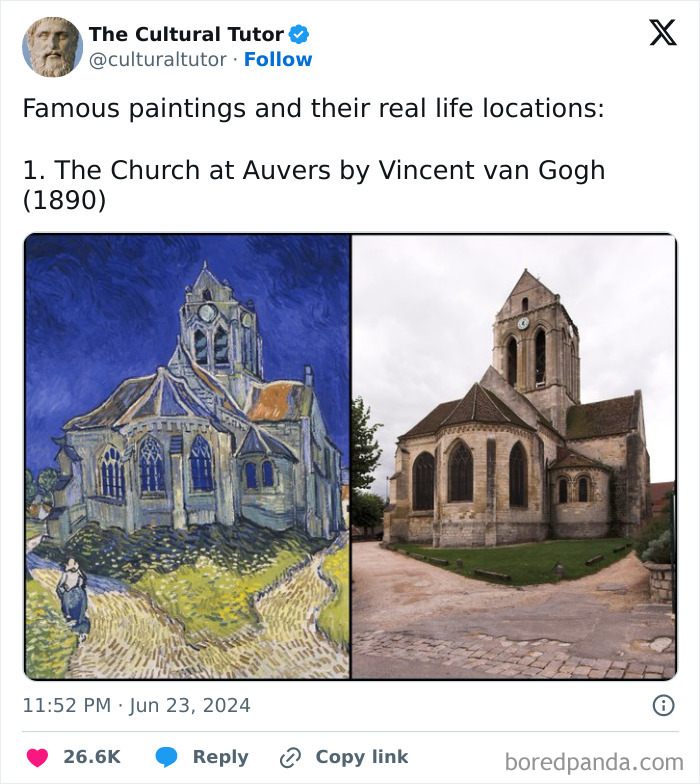
Image credits: culturaltutor
#3
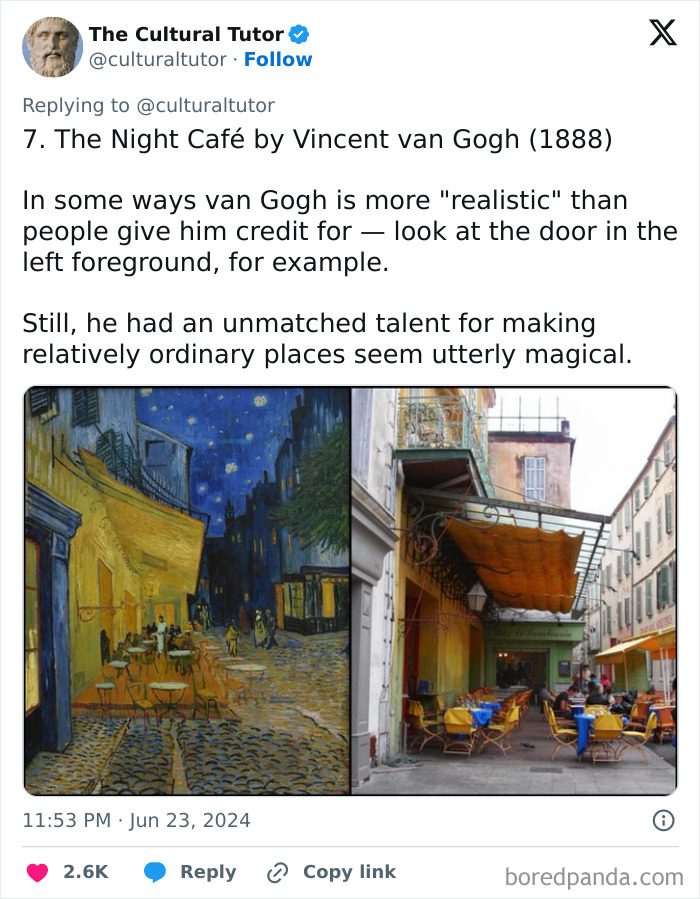
Image credits: culturaltutor
The Church at Auvers by Vincent van Gogh (1890), the first famous painting in the list by Cultural Tutor, was done by the painter during his visit to Auvers. Van Gogh spent his final months in this village just north of Paris because of the presence of Dr. Paul Ferdinand Gachet (of whom van Gogh also did a portrait), a physician specializing in melancholia.
The company of Dr. Gachet and his circle of acquaintances, many of whom were artists, helped only temporarily. Soon, feelings of loneliness and depression returned, and, tragically, van Gogh took his own life.
Interestingly, his brother, Theo, wanted to hold the funeral at the church in Auvers. But the priest said no. Van Gogh was a Protestant, and, what's more, he had taken his own life. Both brothers, however, rest not far away from the church depicted in the painting – in the town cemetery.
#4
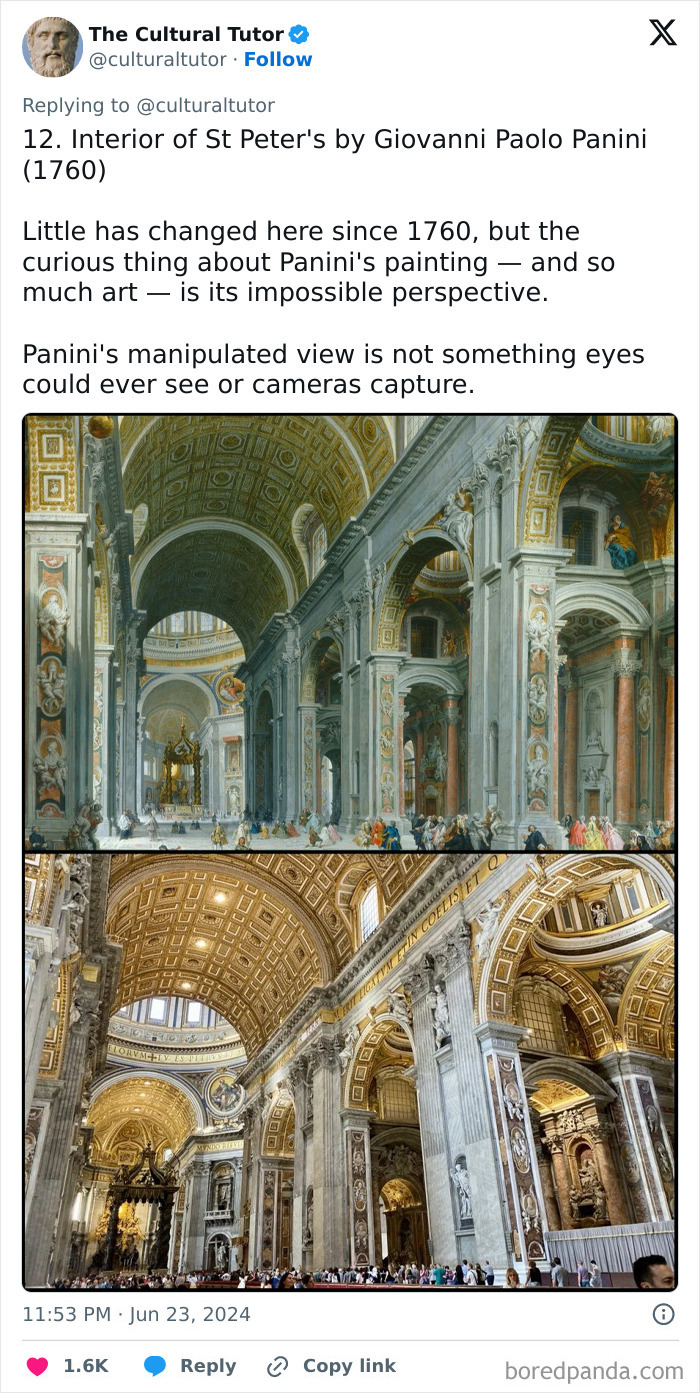
Image credits: culturaltutor
#5
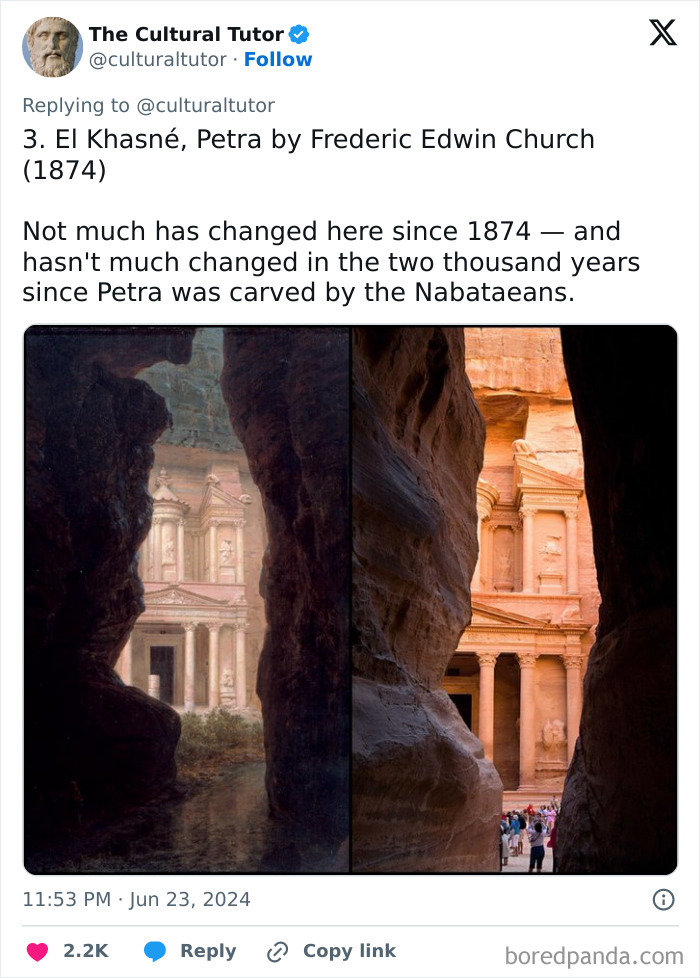
Image credits: culturaltutor
#6

Image credits: culturaltutor
The Mont-Saint-Michel Island, depicted in the famous painting of the same name by James Webb in 1857, is a famous tourist destination. Its history dates back to the 8th century. Bishop Aubert apparently claimed Archangel Michael appeared to him and told him to build a church atop the island.
Then, after 966, the dukes of Normandy and French kings built a Benedictine abbey on the island. During the Middle Ages, they added monastic buildings to the ensemble, making it the center of attraction for great minds and pilgrims.
Today, the government tries to preserve the exceptional landscape of Mont-Saint-Michel. They moved car parks further inland, so tourists who want to get to the mount now have to either walk or take specially devised shuttle buses.
#7
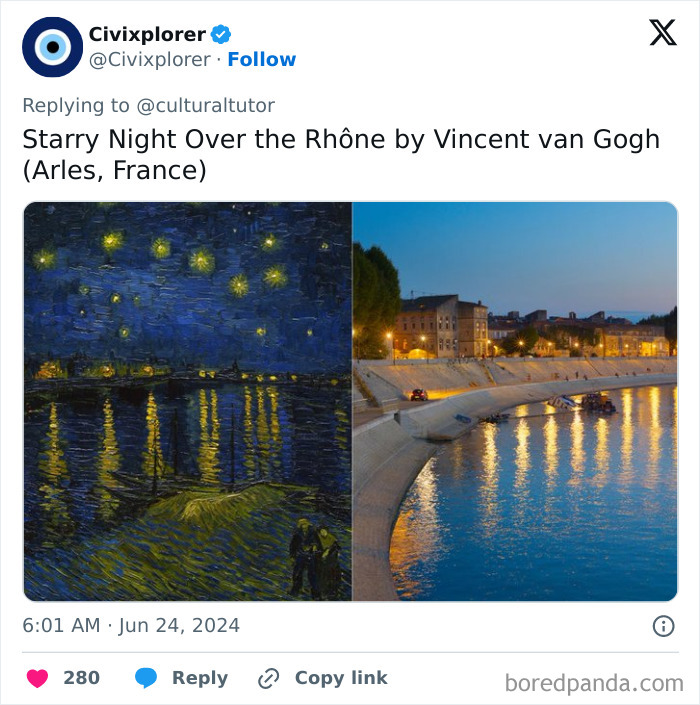
Image credits: Civixplorer
#8
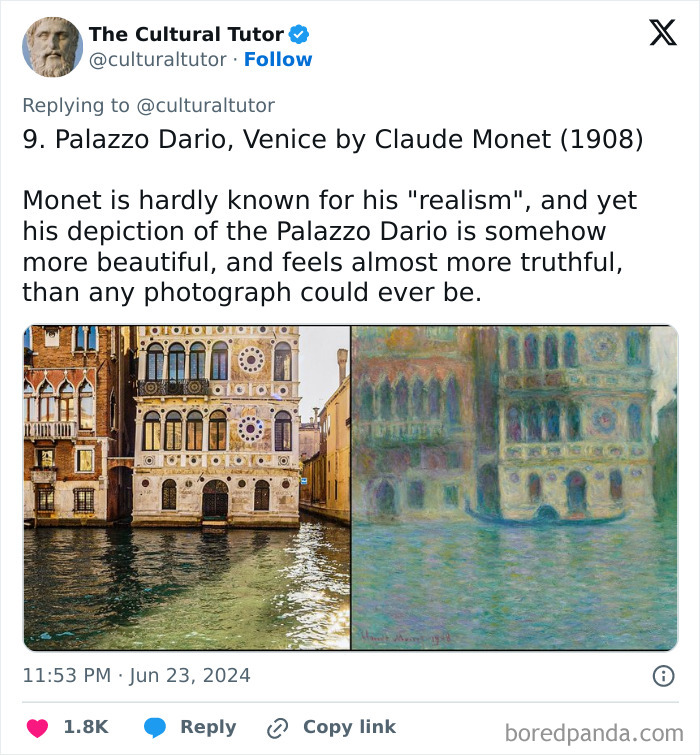
Image credits: culturaltutor
#9
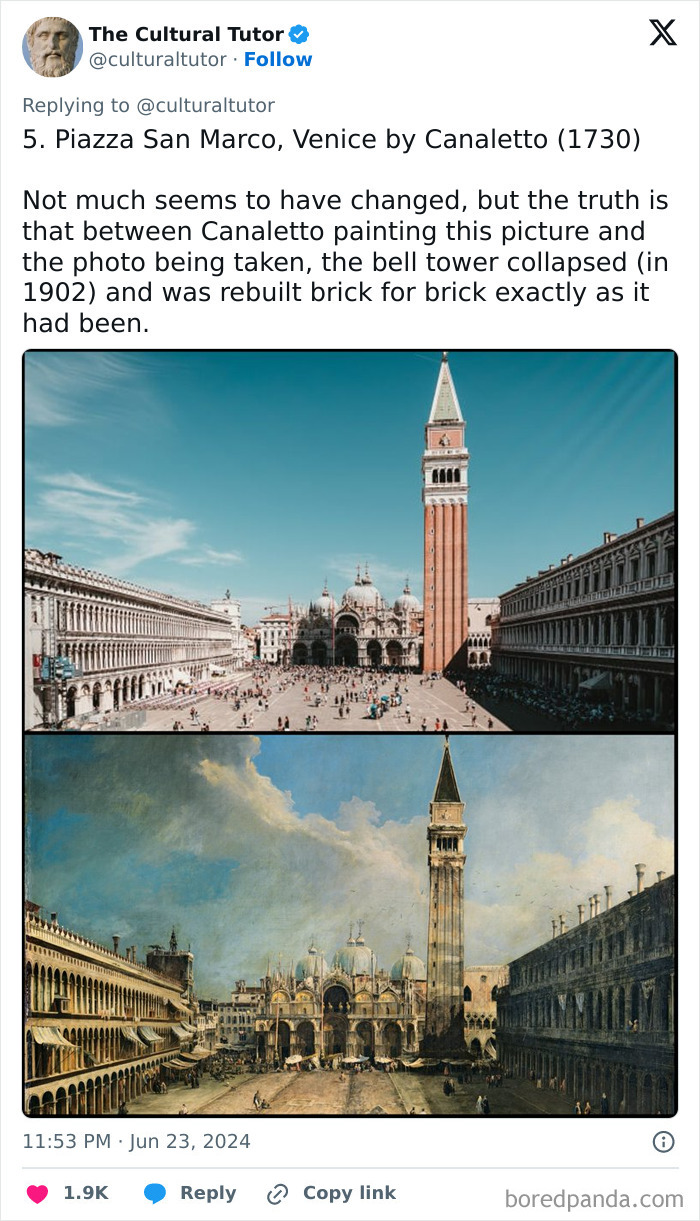
Image credits: culturaltutor
Frederic Edwin Church's magnificent painting El Khasné, Petra (1874) depicts the temple in the historical city of Petra, Jordan. Church was an American landscape painter, so this particular piece was different from his usual style: no panoramic views and little sense of depth.
The purpose of the Al Khazneh, or the Treasury of Petra, was unknown. Some archaeologists thought it was a temple, and others claimed it was used to store documents. However, in 1996, they uncovered a crypt. Archaeologist Suleiman Farajat found the remains of at least 11 individuals.
#10
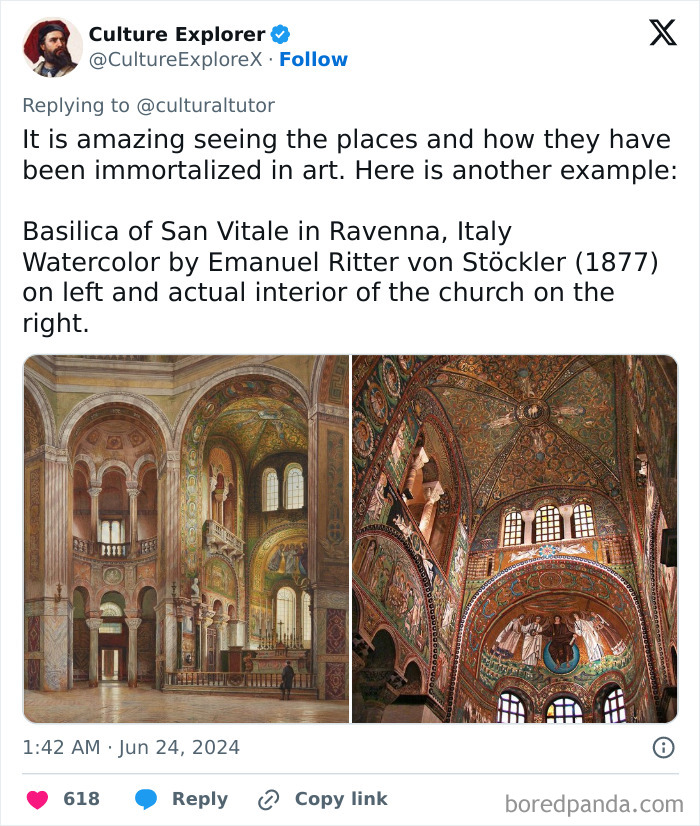
Image credits: CultureExploreX
#11
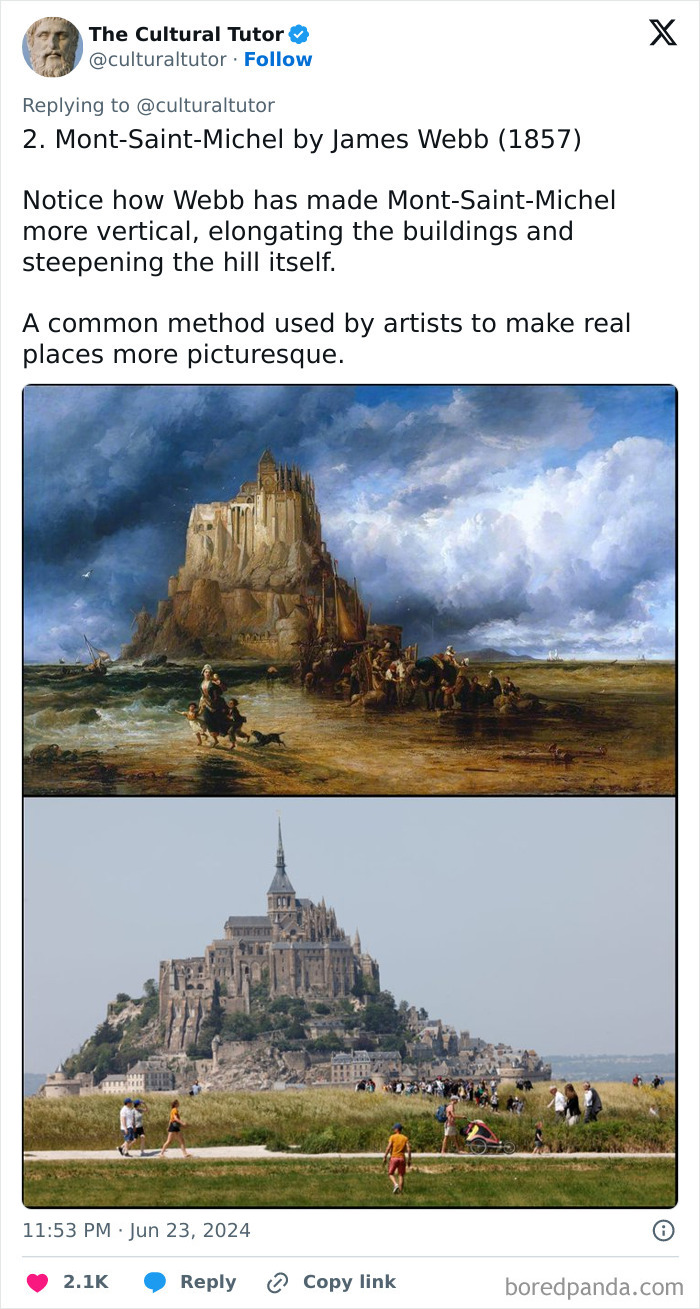
Image credits: culturaltutor
#12
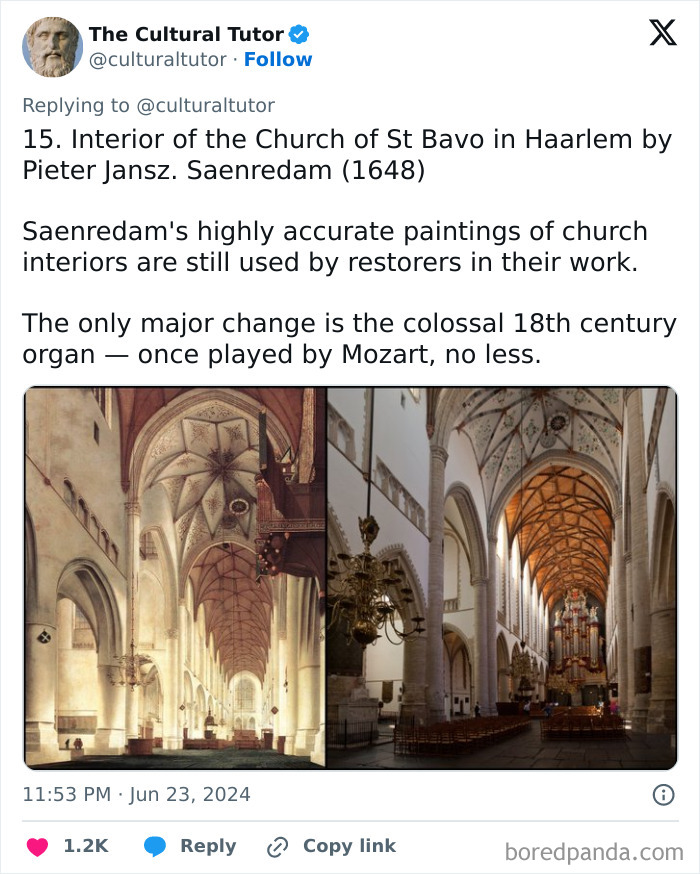
Image credits: culturaltutor
The house in American Gothic by Grant Wood (1930) is a very popular tourist attraction as well. The story goes that Grant sketched the house while on tour in a small Iowa town. Upon his return home to Cedar Rapids, he painted the iconic American Gothic. Today, there is a visitor center adjacent to the house, together with an exhibit gallery and a gift shop.
#13
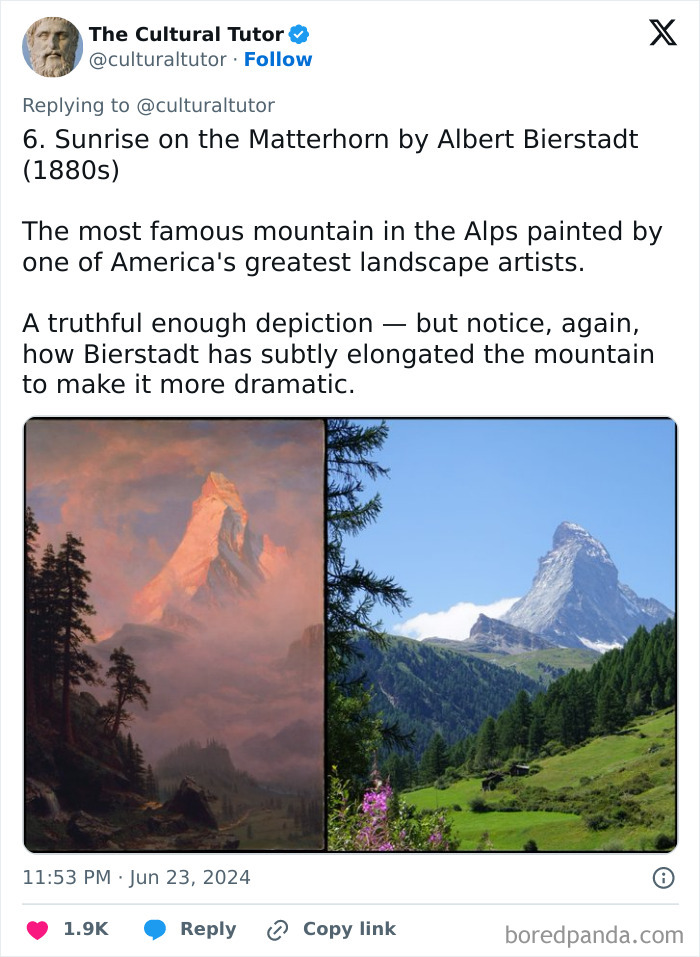
Image credits: culturaltutor
#14
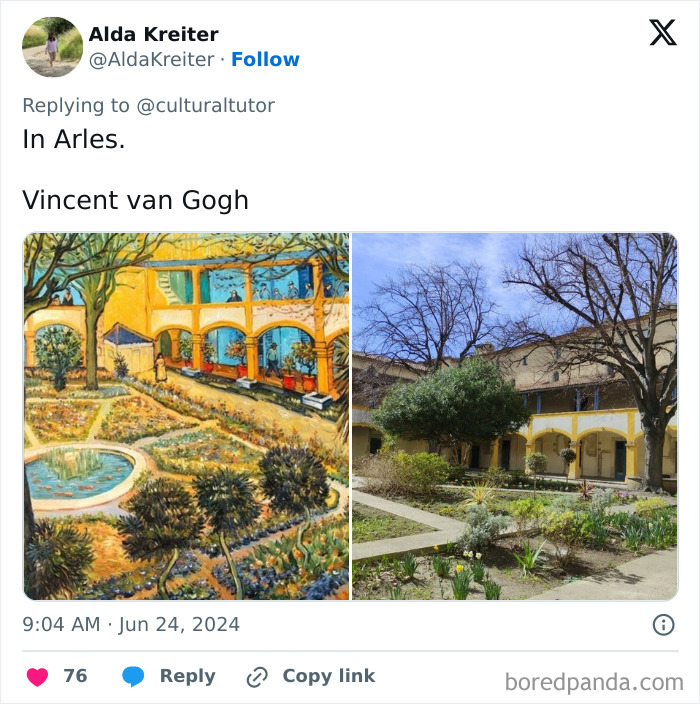
Image credits: AldaKreiter
#15
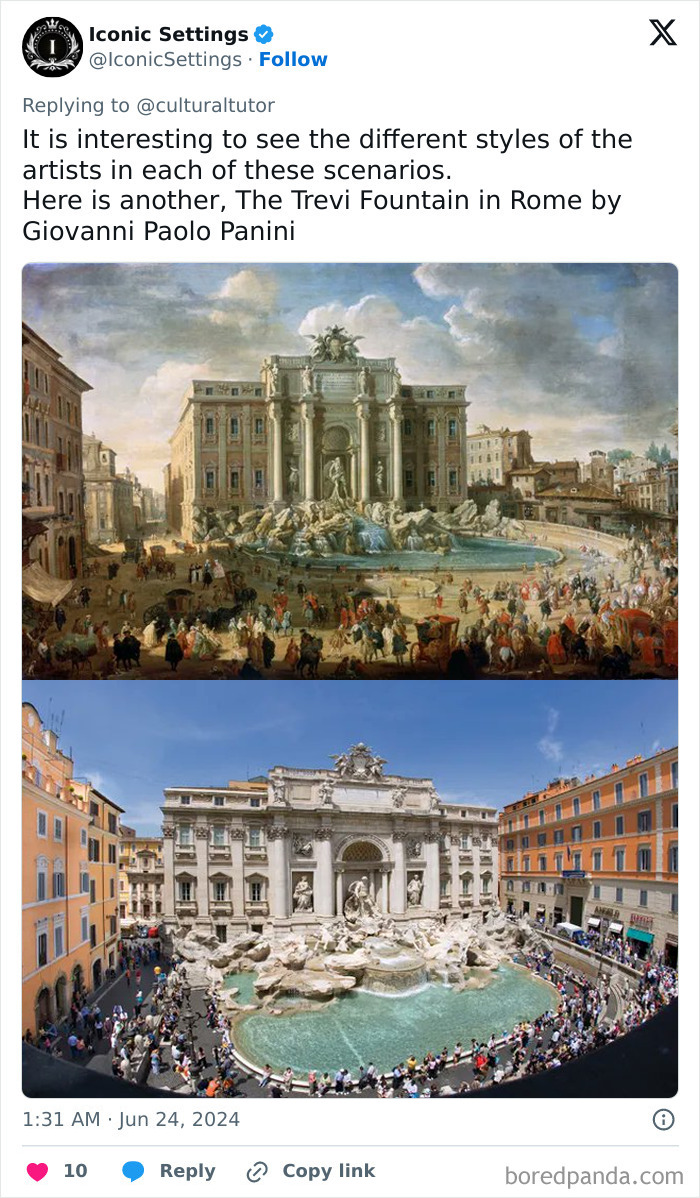
Image credits: IconicSettings
Italian painter Canaletto painted Piazza San Marco, Venice in the late 1720s. His paintings, in general, were very popular with British visitors. Just as tourists today take snapshots or buy postcards of the places they visit during their vacations, people in the 18th century would take home paintings of memorable destinations they visited. Canaletto's Piazza San Marco, Venice, was a popular example of that practice.
#16
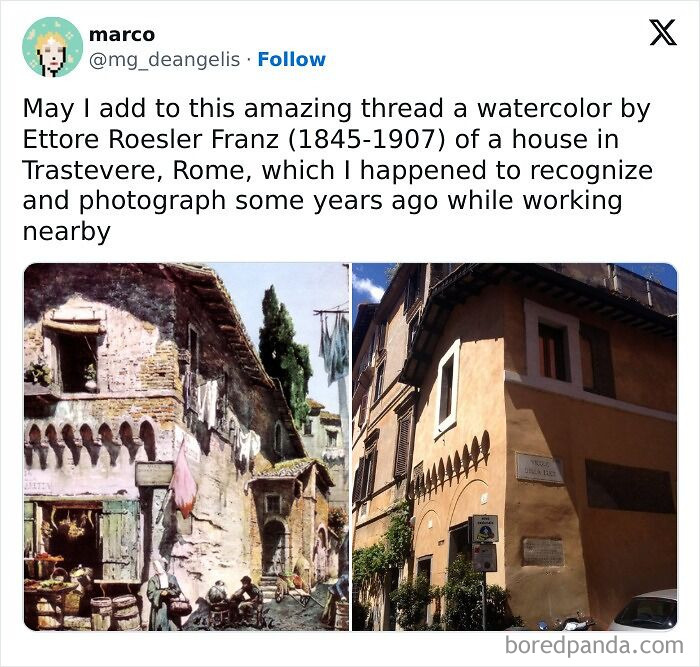
Image credits: mg_deangelis
#17
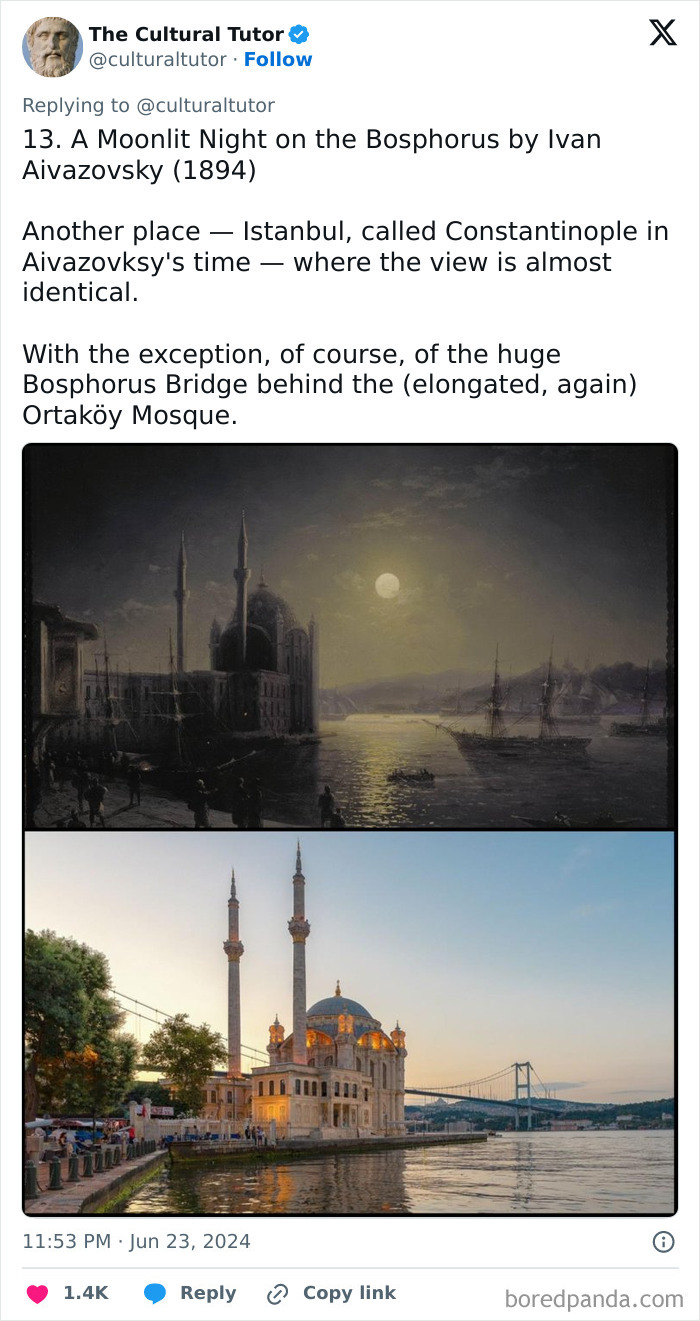
Image credits: culturaltutor
#18
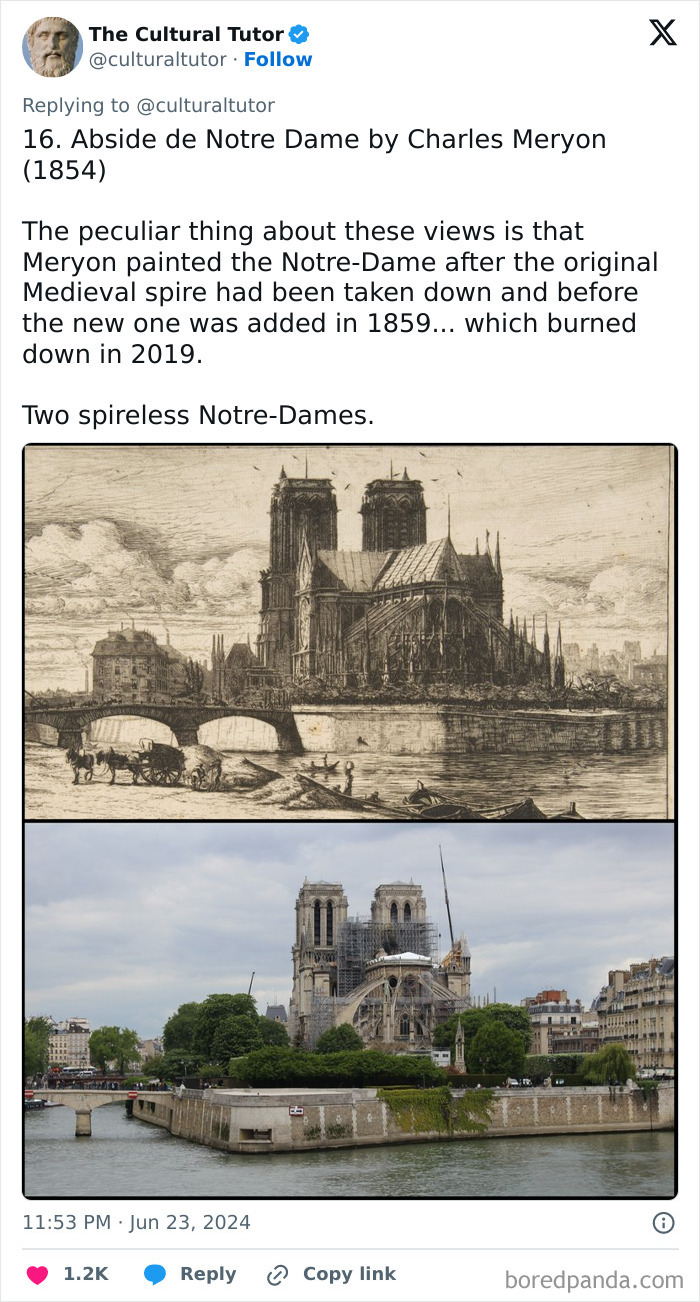
Image credits: culturaltutor
Sunrise on the Matterhorn by Albert Bierstadt (1880s) depicts the most famous mountain in the Swiss Alps. It's often even called "the jewel of Swiss Alps." The mountain is right on the border between Switzerland and Italy. Fun fact: there is no cable car that goes up. Experienced climbers, therefore, can climb the mountain themselves.
#19
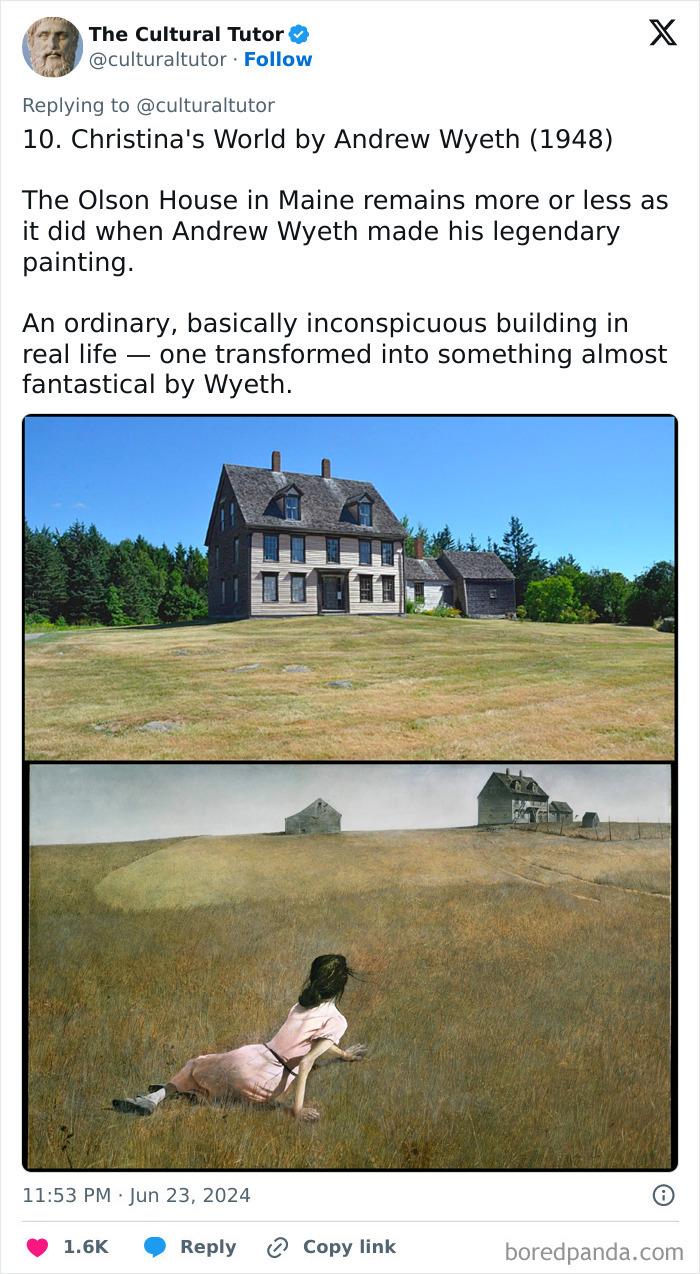
Image credits: culturaltutor
#20
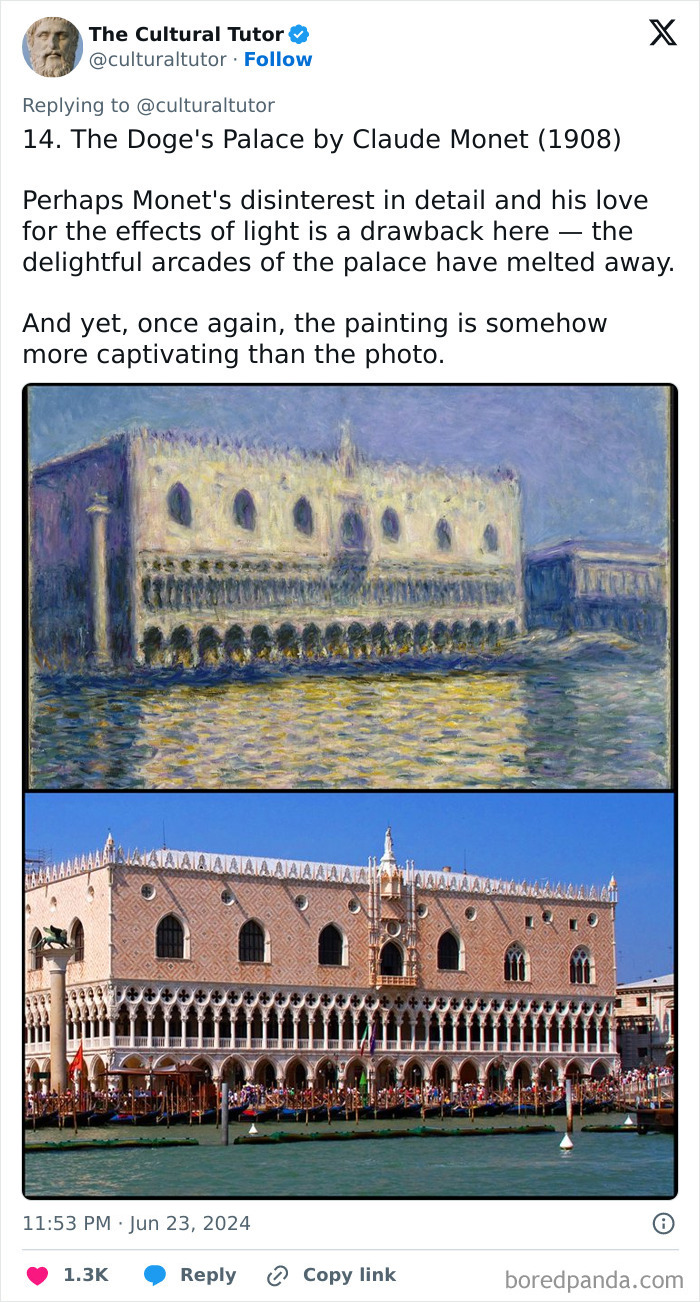
Image credits: culturaltutor
#21
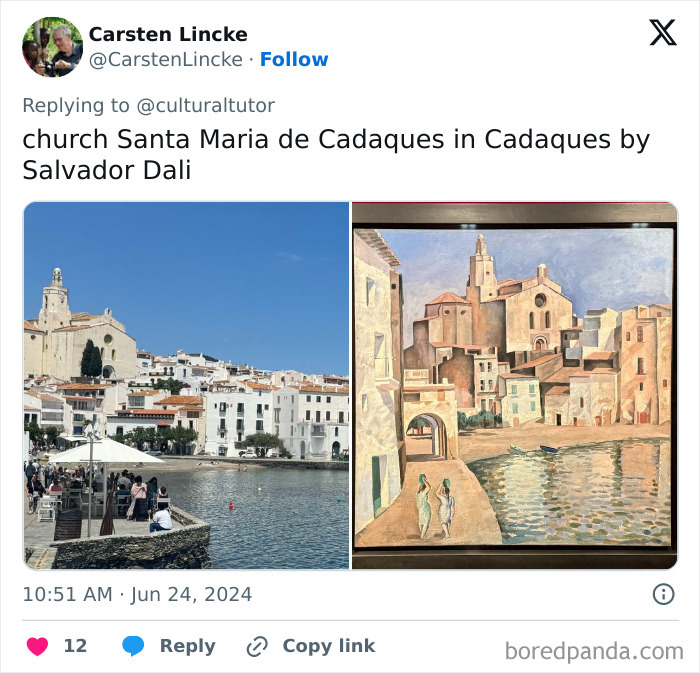
Image credits: CarstenLincke
The magical cafe in van Gogh's Café Terrace at Night Café (1888) was at the northeastern corner of Place du Forum in Arles, France. Another title for the painting is actually The Café Terrace on the Place du Forum.
In 1944, the original site was destroyed during an Allied bombings. In the early 2000s, three Arles residents recreated the site to look exactly like van Gogh's painting, opening Café la Nuit. Sadly, it closed in 2023, as its owners faced charges of tax evasion.
#22
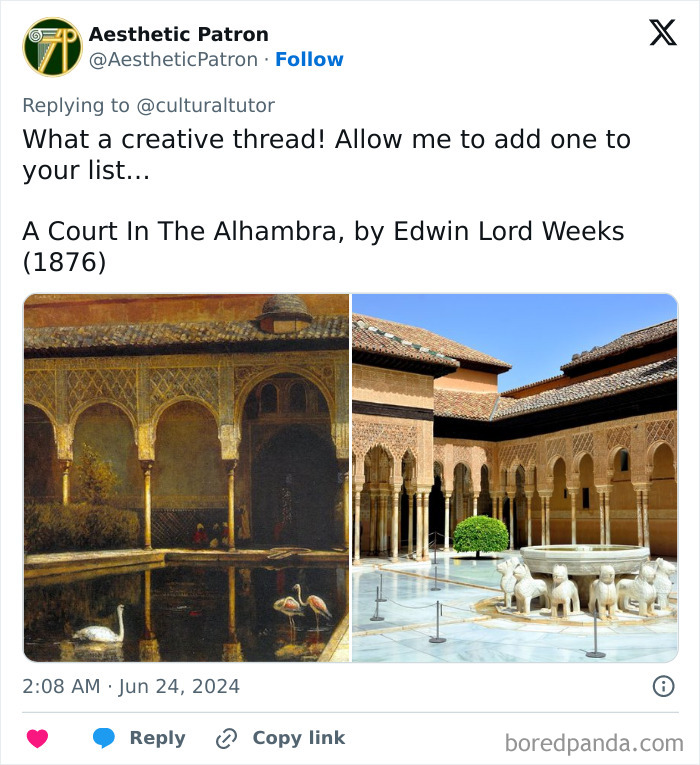
Image credits: AestheticPatron
#23
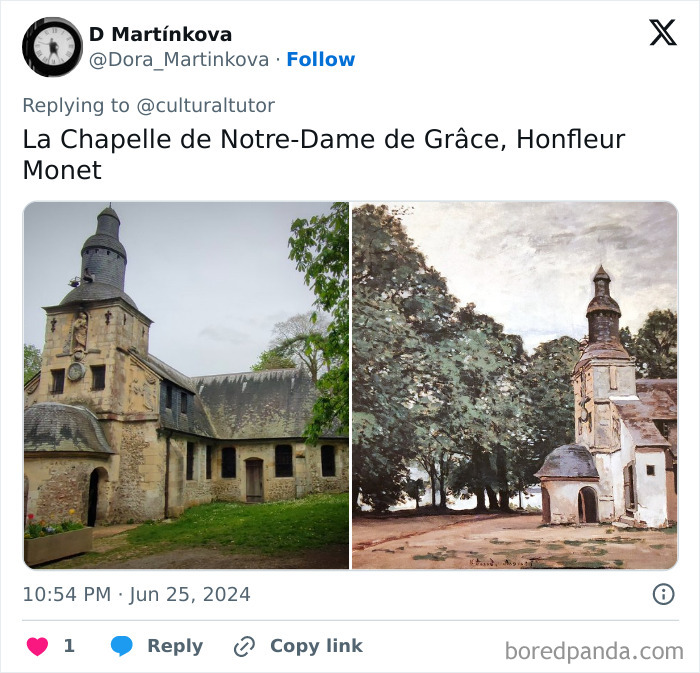
Image credits: Dora_Martinkova
#24
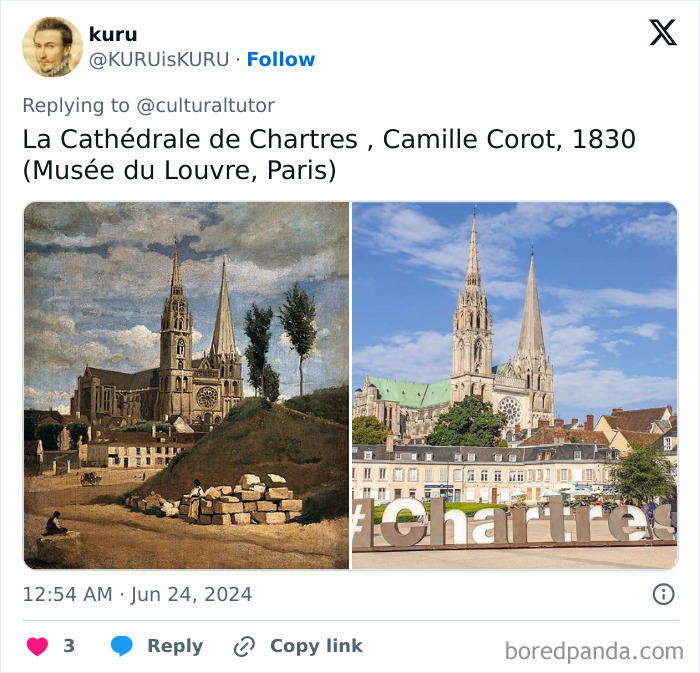
Image credits: KURUisKURU
The house from Christina's World by Andrew Wyeth (1948) still stands today. It's called the Olson House, and it is about 30 minutes south of the Farnsworth Art Museum in Cushing. Brother and sister Alvaro and Christina Olson inspired Christina's World and some 300 other paintings and drawings by Wyeth. The Olson's were neighbors of Wyeth's, and Christina had a degenerative muscle condition (probably polio). She didn't want to use a wheelchair and preferred to crawl, as depicted in the painting.
#25
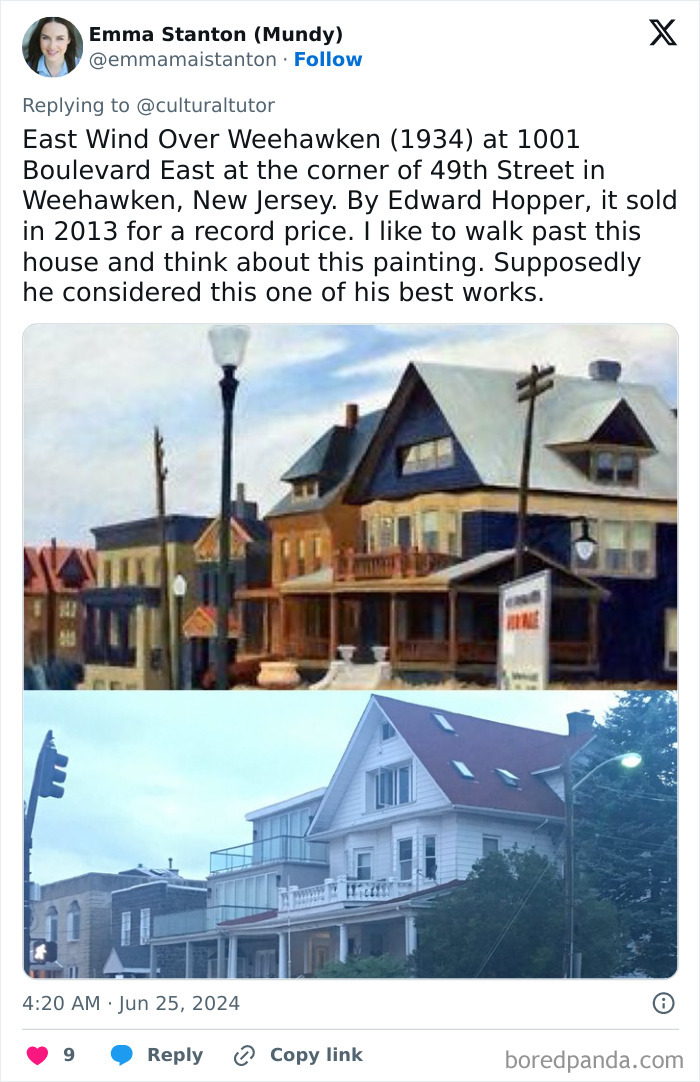
Image credits: emmamaistanton
#26
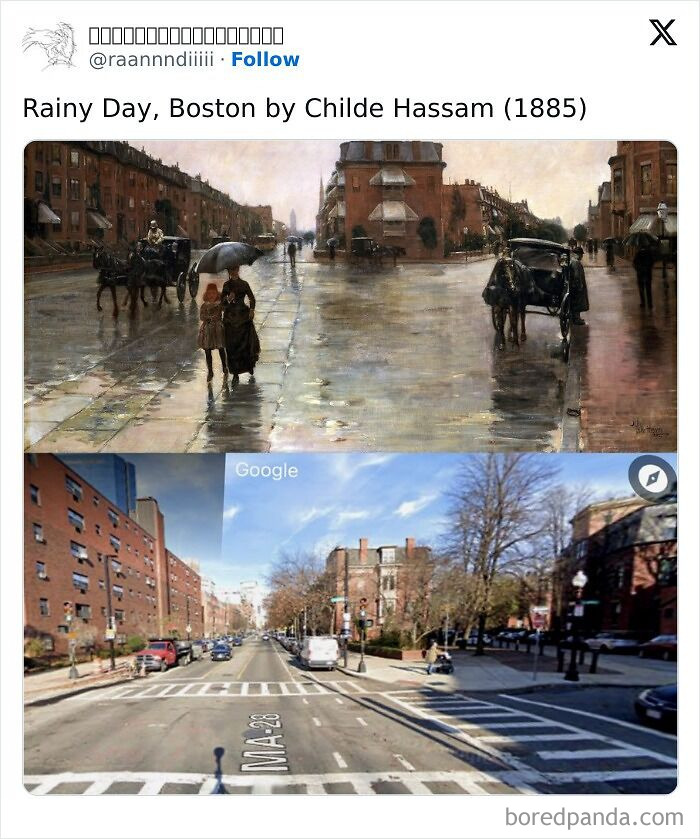
Image credits: raannndiiiii
#27
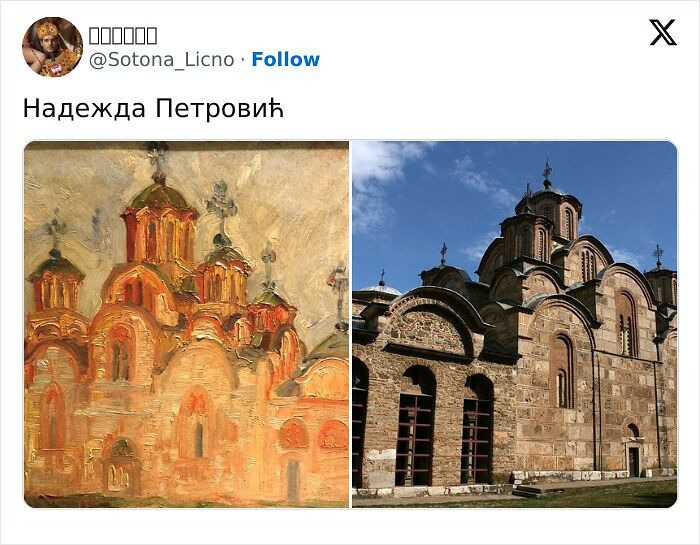
Image credits: Sotona_Licno
Art Historian Joachim Pissarro writes: "For Monet in Venice, time was not to be one of the factors of variations for his motifs. Rather, it was the 'air,' or what he called 'the envelope' – the surrounding atmospheric conditions, the famous Venetian haze – that became the principal factor of variation with these motifs."
#28
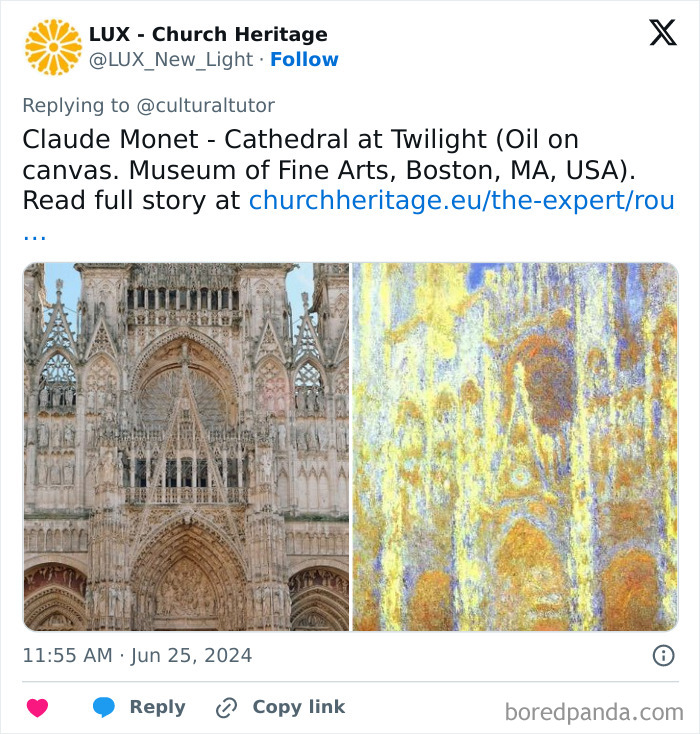
Image credits: LUX_New_Light
#29
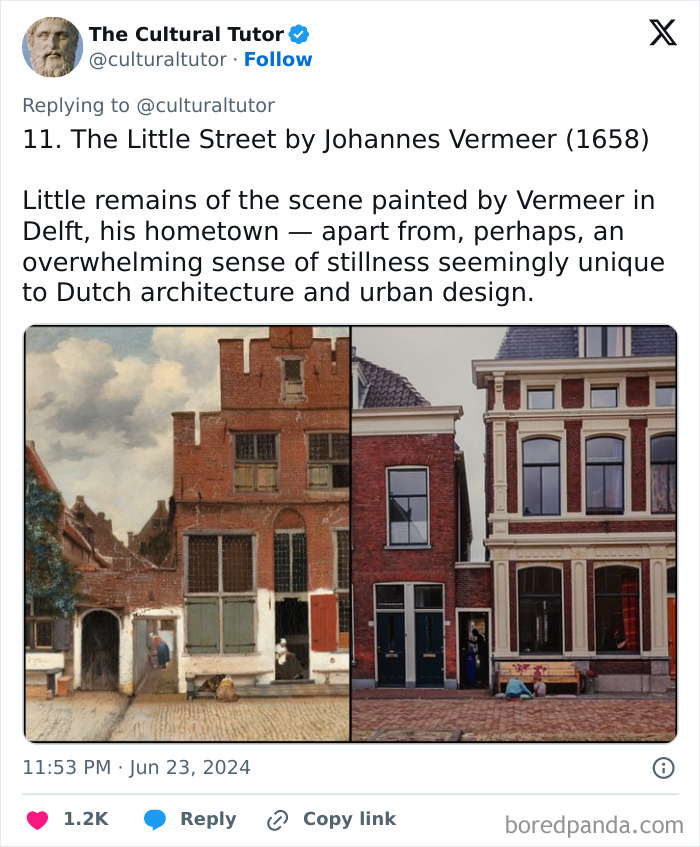
Image credits: culturaltutor
#30
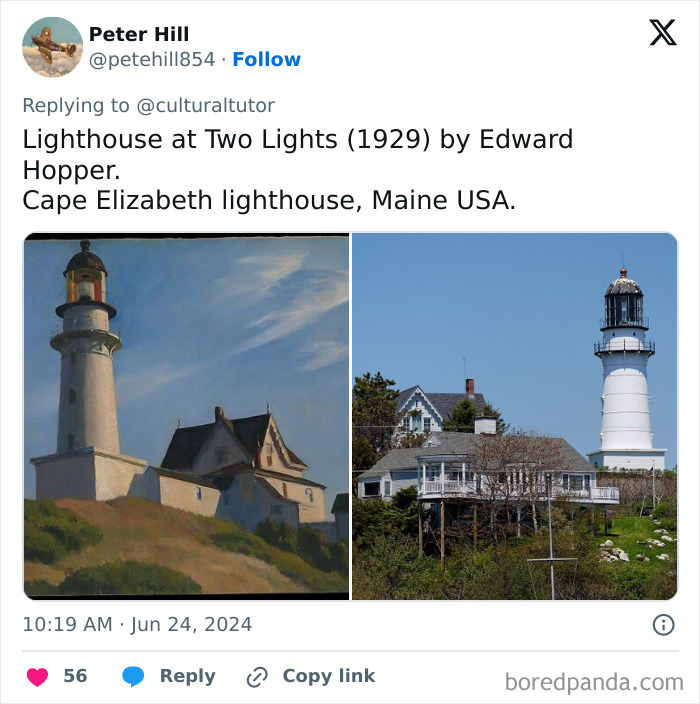
Image credits: petehill854
The Oxford High Street, depicted in a painting by JMW Turner in 1810, remains almost unchanged today, many art critics say. It's true that the buildings have remained the same, but the street is often marred by cars, hordes of tourists, and unaesthetic-looking street signs.
Turner did 10 watercolors of Oxford between 1798 and 1804 and two oils, one of which was High Street. When considering Oxford landscapes for a series of his greatest watercolors, he rejected this one. He believed it had an "unparalleled view of technical mastery that he could not repeat."






